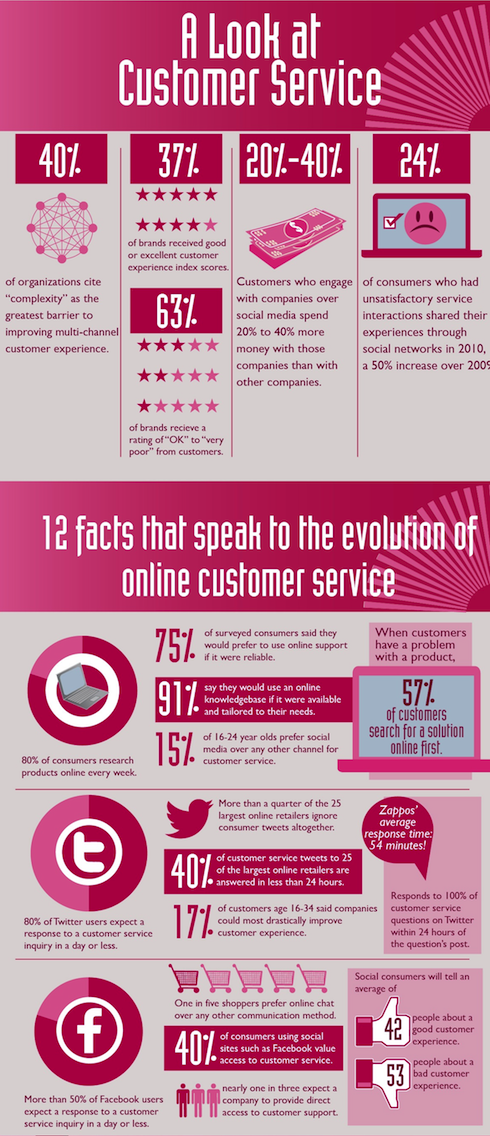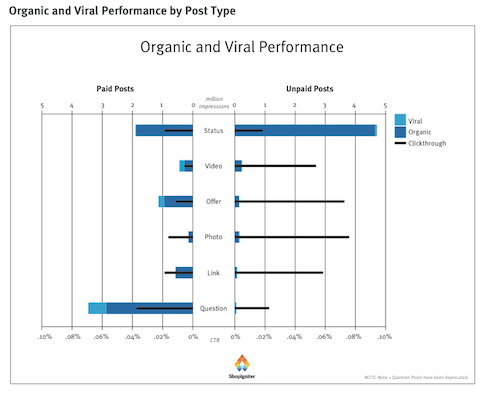By Nick Johnson - September 3rd, 2013
How HR has gone social, ads on Facebook and how customer services must embrace social communication.
How social media is shaping customer service
Yet more evidence is included in a new infographic from The Connection shows that when consumers run into trouble with goods or services they immediately look to the Internet for help. General organic search is the preferred method of locating help with knowledge bases next, with social media bringing up the rear.
Social media may be third in this survey, but this still represents nearly 40% of consumers who will use their social media networks for help. And response times are getting shorter with 80% of those surveyed wanting a response when they use Twitter within 24 hours.
Ensuring your corporation can cope with customer services queries via its social networks is vital to get right. At the moment, the vast majority consider the brands they interact with as only having ‘good’ social customer service. Complexity is still seen as a major barrier within corporations, but this must change. Social media within the customer services arena is a battleground that all brands must win.
Social media and HR
Social media may be impacting marketing and customer services, but increasingly corporations’ HR departments are using these networks to find employees. Last year a report from the UK Commission for Employment and Skills showed that just three per cent of businesses actively use social media for their recruitment. The new report from Acas indicates that nearly 40 per cent of businesses still don’t use social media for recruitment. In the US it is believed that 90 per cent of businesses now actively use social media networks for recruitment profiling.
The Acas report states: “As a marketing tool, Nigel Wright Recruitment (2011) argues that the "passive approach is on its way out”. Early moves into online recruitment were initially the virtual equivalent of a traditional ‘jobs board’ that might publicise vacancies in employment offices or newspapers. However, this approach is quickly being superseded.”
For corporations the Acas report is telling, as it makes clear that HR departments must tread carefully when using these networks as Acas concluded: “Davison et al (2012) argue: ‘we believe that Internet screening for deviance or criminality could result in employee rights violations or possible lawsuits, if it were later determined that such information was relied upon erroneously’. Another issue is potential defamation of character via online postings from third parties: ‘defamation of character could be a problem if websites contain inaccurate and libellous information, which is a major legal concern with traditional background checks’ (Davison et al, 2012).”
There is no doubt that corporations in the UK will follow their US counterparts and increase their use of social media networks in their recruitment processes. Corporations must understand the value of this information and use a healthy does of scepticism when researching potential recruits.
Ads for Facebook
Since its IPO Facebook has been wrestling with its ad mechanics in a bid to provide its advertisers with a platform that delivers high levels of ROI. The new 2013 Social Rich Media Benchmark Report from ShopIgniter reveals that marketing and ad placement on the social media behemoth is showing signs that it can deliver real world value to corporations and their brands. The benchmark concludes:
- With an average conversion rate of 4.4%, social rich media puts Facebook ad performance on par with the best performing digital channels.
- +51% of total engagement was on mobile. Mobile optimized experiences and analytics are critical.
- Paid media not only vastly improved reach but also increased organic and viral impressions by 2x.
- Status posts averaged 5x more organic impressions than any other post type. Viral reach from likes, comments, and shares was mostly insignificant.
- Photo and Link posts had among the best clickthrough rates at .07% and .06% respectively. (Good thing Facebook is making Link posts with images as big as Photo posts in September).
- Richer experiences post-click drove down negativity rates 6x.
And what is abundantly clear is that mobile is boosting Facebook ad engagement with more synergy between this platform and the desktop delivering the best overall results.
Until next time….
The Useful Social Media team.


